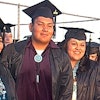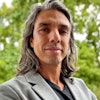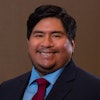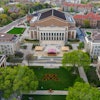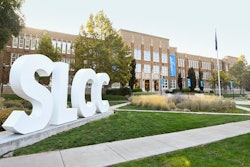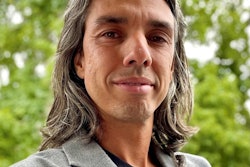ST. JAMES N.C.
The flat coastal plain, punctuated by trailers and cornfields, offers few clues that this is the home of the Waccamaw-Siouans, a little-known American Indian tribe that has lived in southeastern North Carolina since the mid-1700s.
But this small tribe has become the center of a movement that is quietly trying to change the future of an invisible, and often neglected, population.
More than two dozen aspiring doctors from around the world recently wrapped up five weeks of volunteer work with tribes in North Carolina. They helped run day camps and leadership courses, planned wellness centers and worked in tribe hospice programs all efforts to address health problems that afflict American Indians more than any other population.
American Indians in North Carolina, like those around the country, are more likely than any other group to get, and have serious complications from, diabetes, studies show. Compared with white people, they are at higher risk for high blood pressure, asthma, obesity and mental illness. They are less likely to visit doctors, have health insurance, exercise or eat balanced diets.
“American Indians live sicker and they die younger,” said Anthony Fleg, a medical student at the University of North Carolina at Chapel Hill who started the volunteer project. “It’s unjust. But in the eyes of many folks, American Indians are not even on the radar.”
While North Carolina may seem an unlikely place for what Fleg calls the Native Health Initiative, he points out that North Carolina is home to the largest American Indian population east of the Mississippi, an estimated 108,000 people. And unlike those in the American West, most of the state’s tribes are not federally recognized, meaning they receive few public resources.
The ancestral homes of many of North Carolina’s eight state-recognized tribes sit in the state’s most impoverished counties. And in some cases, many tribe members go unnoticed even by their neighbors.
When the project began in 2005, Fleg said, two volunteers went to Columbus County leaders to discuss involving Waccamaw-Siouan students in school sports. “They were told very politely, ‘We don’t have any Indian students here,’ ” Fleg said. “If they’re not noticed, how are they going to be well served?”
Fleg’s volunteers say the program, which operates without paid staff and little funding, is the only one in the country that engages medical students in American Indian communities rather than simply cycling students through clinics. They say they see themselves not as saviors but as seekers who want to forge a connection that could change the troubled relationship between American Indians and conventional doctors.
The program expanded from about 10 volunteers each of the first two years to 26 this year. Because of the program’s rising profile, UNC’s medical school will soon offer a course in American Indian health. Some see it as the start of a new awareness of the struggles of American Indians.
“We’ve always been used in unethical ways for the outside world to get what they needed,” said Missy Brayboy, a Lumbee and the community services director at the N.C. Commission of Indian Affairs. “Here we have a group of young people that want to give to us.”
Inside the St. James Community Center, at a Columbus County crossroads about 125 miles south of Raleigh, the Waccamaw-Siouan tribe is very much alive.
A dozen brown-skinned girls are tangled in a heap on the tile floor, giggling and groaning as Colleen Keough tells them to put their right foot on green.
Keough, 21, recently graduated from the University of Texas and plans to enroll in medical school. This is her third week of helping supervise a group of rambunctious elementary and middle schoolers as they do tribal dances, learn about health and culture, prepare nutritious lunches and, sometimes, play Twister.
She admits this isn’t what she expected. “I thought we would be on a reservation,” said Keough, who had never been to North Carolina.
Instead, she found a place where American Indians are virtually indistinguishable from the other residents of a desolate rural area.
Keough, like most volunteers, spent the summer living with an American Indian family, learning about the insular culture that makes them more vulnerable to the diseases of poverty.
Some still frequent herbal healers and do not have conventional doctors or health insurance. Many American Indians see “white hospitals” as “places to go and die,” said Emily Van Dyke, a fourth-year medical school student from California, herself a Blackfoot, who spent the summer working in a Tuscarora youth camp.
Nakoma Simmons, who helps her daughter, Brittany Simmons, run the Waccamaw-Siouan camp, said the approximately 2,500 members of her tribe have lived for generations in two tiny communities. She said they are leery of strangers and stay within a small orbit.
The campers went to Lake Waccamaw State Park, a mere dozen miles from their homes, and several of the children had never seen it before, Simmons said.
So in addition to teaching the children to exercise and prepare nutritious foods on this day, they lunched on spinach salads with feta cheese and fresh blackberries they are using the volunteers to introduce campers to the wider world. The children listened to presentations about Ireland, Canada and Chapel Hill, all as foreign to them as the moon.
Keough showed them a Power Point presentation with pictures of Texas: rodeo riders, the skyscrapers of Dallas, the University of Texas’ gigantic football stadium.
When she finished, girls who had never left North Carolina were singing “The Eyes of Texas,” pinkies and index fingers extended in the sign of the longhorn.
In this, the project’s third year, five tribes welcomed volunteers. But the offer of outside help wasn’t always an easy sell.
In the program’s first year, 2005, only the Waccamaw-Siouan agreed to host volunteers, who helped them create healthy menus for a day care center.
Other tribes were wary of the kinds of projects in which well-funded researchers used American Indians as subjects or ran programs that gave the tribes no power.
“What we’ve seen in the past is, when outsiders come in, they want to force changes,” said Mark Deese, a member of the Tuscarora Indian Nation of North Carolina, who uses volunteers at his youth camp. “They don’t know that our traditional government needs to monitor what’s going on.”
Fleg and his wife, Shannon, a Navajo from Arizona, have built trust by offering the tribes complete control. The tribes create the projects, while volunteers provide the manpower. Volunteers don’t bring their own project ideas, and they never collect data on tribe members unless the tribe asks them to.
Leah Genge said she will return to medical school in Canada with no illusions that, in a few short weeks, she changed the lifestyles that may mean early death for the children she worked with this summer.
But she said she leaves with a passion for serving marginalized people that will change her medical career.
“The barriers are not as obvious as you think they are,” Genge said. “Services can be available, but if we’re not culturally sensitive, then they might as well not be there.”
Information from: The News & Observer, http://www.newsobserver.com
– Associated Press
© Copyright 2005 by DiverseEducation.com

